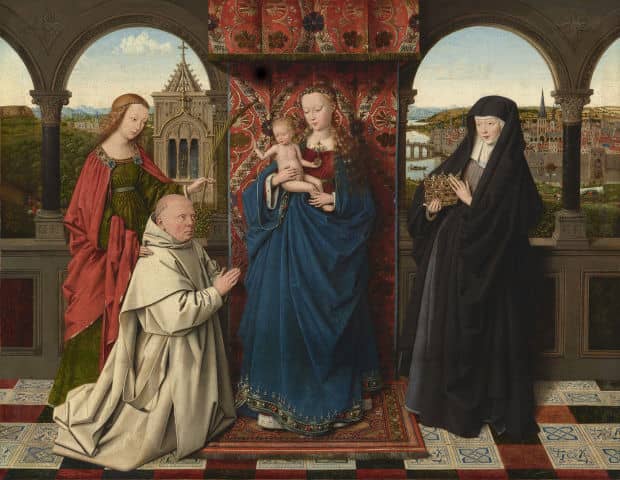
As a first introduction to my Plein Air painting tips, I thought I would give a quick look at the emergence of painting from nature in Western art. You guessed it: I used to be an Art Historian.
Bits of generic landscape began appearing in western art as early as Roman wall paintings. These elements were mainly decorative touches, perhaps to suggest that an interior space was open to the outside. It is not until the Renaissance that there is evidence of artists looking with real interest at nature, particularly in Northern Renaissance art. This seems to have been part of a wide ranging fascination with the natural world that was more scientific than aesthetic.
However, from the Renaissance onward, study from life was increasingly a central tool for artists throughout Europe. Mostly, though, this meant study of the human figure. The themes of serious painting were by convention either historical or religious, with the natural world coming in only as a useful handmaiden. Even in the Netherlands, where a brisk trade in landscape paintings thrived beside genre scenes and still lives, all finished work offered for sale was painted in the studio.
If we jump forward to the late 18th century we find a big step taken, especially in Great Britain. Young noblemen going on the grand tour of the Mediterranean wanted a record of their travels, and either purchased work from local artists, or better yet, sponsored a watercolorist to accompany them to keep a “pre-photographic” record.
At the same time the search for the “picturesque” became a craze among the gentry, going to the lakes and mountains to “find pictures”. Amateurs looked for scenes that reminded them of paintings, and recorded them on the spot. There were clear rules on what kind of view was to be considered picturesque, based on the landscapes of Claude Lorraine in the classical tradition: Dark foreground with side screens, lighted distance, with a progression from brown through green to blue.


For the next 100 years the enterprise of painting from nature was a major trend, but the works were “not important” according to the accepted hierarchy of proper subjects for painting. Even a thoroughbred landscape painter like Constable whose direct studies from life are stunning, would never have dreamed of trying to exhibit them as real art in the Royal Academy exhibitions. The “Cornfield” seen above was a presentation work, done in the studio.
I strongly suspect that Constable preferred his direct oil sketches from nature to his grand show works. He was a generation too soon to openly champion his sketches. It was left to the Impressionists to break from the French Academy and put on their own exhibition of their work from nature. A scandal at first, of course, but within a generation the popularity of impressionist painting was well established, and the work of prior generations of plein air painters corresponding rose in public estimation. Plein air painting was here to stay. More about this in my next post.